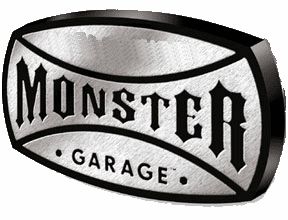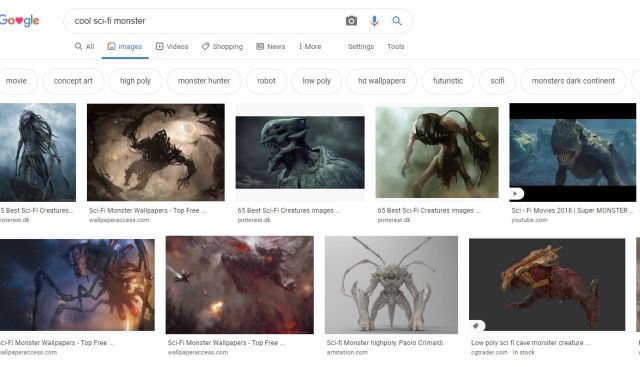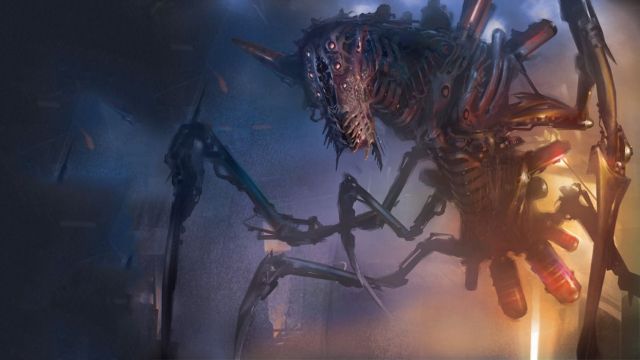
Hello everyone, and welcome to the Finder’s Archives.
Today, I’m going to start something slightly different, as I try to construct a monster with you. This is likely to be a small mini-series, and will specifically focus on using the Starfinder rules-set for it, but the intention is for it to be a relatively generic guide to how to make a monster.
So without any further ado, let’s get into it.
Concept:
Stage one is basically the idea step – what you want your monster to look and feel like. This mostly depends on where you get your inspiration from but for this, I’m going to go about it slightly differently to how I normally do it. I’m going to head onto the Google Machine with you, and look for something that looks cool, and inspirational to use. I’m simply going to type in “cool sci-fi monster” and see what comes up. Here are some of the ones that I see, some of which we know from other sources, and some of which are just random new stuff.
And here is the one that I chose, as I thought the combination of robot/undead/spider looked awesome.
So looking at this thing, what do we see? Well, the first thing that catches is the legs and eyes, but looking at it a little closer, everything seems to come in groups of 6. Six eyes, six legs, even, looking closely, it looks like six teeth on each side of the mouth. So that’ll be a theme in our creature. Next, we look at those close – it looks like those things would HURT, if they stabbed you, so it’s probably pretty good in combat – though it doesn’t seem to have any ranged attacks that are obvious to the eye. The next thing to look at is those “containers” that you see sticking out from both abdomen and back. They look like they might be what’s powering the creature, or giving it extra abilities, so they’ll feature too.
So what do we end up with here? Well, it’ll be a close combat creature, and it’ll be what’s termed a Combatant in Starfinder; i.e. a creature that focuses mostly on combat, as opposed to skills or spells. I’m going to take a guess at the Size since it’s difficult to tell but that looks like buildings in the background, so it’s at least the size of a house, so we’ll go with a Huge size or bigger. (I’m leaning towards Colossal at this point). I don’t want it to be too high of a challenge rating, as high-level parties tend to be rare, but I do want it to be used, so we’re going to place the Challenge Rating at 10 – that might change as we revisit it, once the abilities, etc, are written. And finally, I’m going to go with those canisters/containers underneath it being the source of its Resolve Points. A lot of monsters don’t have these, as they’re used to activate abilities of various kinds, but this one will feature those. At this time I’ve got a few ideas (a flamethrower internally in the mouth, regenerative abilities, etc.) but I’m not going to decide on which abilities just yet. For now, this will do as our building blocks.
Choosing Type and Threat:
Not every system uses this, but Starfinder (and Pathfinder, and D&D) have their creatures themed, and there tend to be 3 themes (these are spelled out in Starfinder, unlike in the other two systems, where they’re implicit): Combatant – a creature specializing in combat, whether ranged or close. They have fewer special abilities than the others, and fewer skills, but tend to be deadly in combat. Spellcasters – these focus on spells and spell-like abilities. Their damage range might be as big as that of a Combatant, but they use spells to accomplish their goals instead of brute force. Finally, there are Specialists, that focus on the use of skills. They have weaker attacks than a Combatant (but not as weak as a Spellcaster) but have the most skills and highest skill rolls for their level. They usually fill the role of neutral or friendly NPCs, unlike the other two, which are most often opponents.
Threat level is determined by Challenge Rating (or CR). As determined above, I want this at 10. That means that it’s a challenge for a group of 4-6 10th level characters, but not an impossible one. Lower Challenge Rating creatures are easier to overcome, while higher ones are more difficult. You can pit higher and lower CR creatures against your group, but these should be for special occasions (like a ton of mooks at low CR for players to feel powerful, and a higher CR for a difficult boss).
And that’s it for now. Next time, we start statting up our creature and discuss what will go where, and why.


